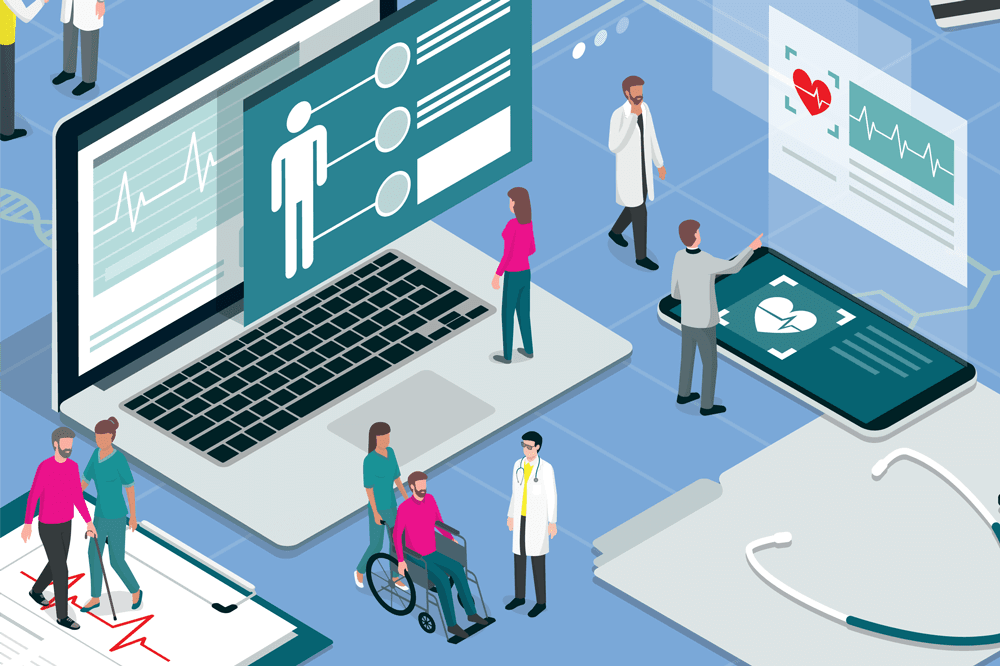For most of the 20th century, laboratory investigations for children were usually undertaken as part of a service for patients of all ages. There was limited appreciation of the differences between results for adults and those for children. What might be a concerningly high serum alkaline phosphatase activity for an adult, for instance, would have been a normal result for a growing child – but, without including age-related reference ranges, the report may not have conveyed this information. Some of the earliest books to describe pediatric reference intervals were published in the 1980s by Blackwell Scientific Publications and by the American Association for Clinical Chemistry – and, from then on, we have become increasingly aware of the many differences between younger and older populations. In fact, an experienced pathologist suggests that the greatest advances in pediatric biochemistry over the last 40 years have been in newborn screening and more accurate pediatric reference intervals (1).

The authors of a 2002 review concluded that the practice of pediatric laboratory medicine (PLM) involves unique challenges related to development, nutrition, growth, and diseases during different periods of infancy, childhood, and adolescence (2). They proposed that subspecialty pediatric laboratory testing offers many opportunities for improved pediatric patient care, research, and education – and that it is best practiced with close collaboration between pathologists and clinicians. They described the many challenges involved, including the need to deal with small sample volumes and the need for reference center provision of esoteric tests.
An editorial in 2009 described a worldwide PLM network (3). The opinion was expressed that children cannot just be regarded as small adults – a fundamental approach that holds for diagnostic services for the management of sick children.
In 2017, leading international specialists in the field reflected on reasons for developing a PLM subspecialty distinct from adult pathology and laboratory medicine (4). In many countries, young patients are treated in children’s hospitals. The blood volumes available for testing are lower than those for adults, and urine collection can be problematic – issues that make microanalysis especially useful. The test menu is different for children, too, particularly with regard to the diagnosis of inborn errors of metabolism and follow-up of newborn screening. A good network of reference laboratories is needed to evaluate rare diseases presenting in childhood. All of these considerations favor the provision of specialist pediatric clinical laboratory support for the management of childhood disease.
The International Federation of Clinical Chemistry (IFCC) Task Force on Pediatric Laboratory Medicine was established in 2006 as the successor to the International Association of Pediatric Laboratory Medicine. The task force has several aims: to coordinate the establishment of worldwide reference ranges for laboratory test results in pediatric patients of all age groups; to form a sound support basis for the continuation of the successful International Congresses of Pediatric Laboratory Medicine; and to create a worldwide network of scientists working in laboratories that specialize in pediatric medicine. In keeping with this mission, the triennial congresses focus on scientific and technological achievements in all areas of pediatric clinical and diagnostic laboratory medicine. The most recent one, in South Africa, was the most successful yet (5), and next year’s meeting in South Korea, will tackle emerging technologies.
To address the challenges and issues specific to PLM, specialists in the United Kingdom formed a new national collaborative network in 2014: the Pediatric Laboratory Medicine Network (PaLMnet). The network aims to provide expertise and advice on the best laboratory techniques for use in both pediatric specialist and non-specialist clinical laboratories alike. And it is already making a difference; a recent audit of sweat testing in the UK was carried out and, from the evidence obtained, recommendations on sample collection were made. Further differences have been recognized between pediatric and adult laboratory medicine, such as different typical presentations, test repertoires and priorities, and the higher proportion of abnormal results in children. Testing may require greater urgency and different critical action limits.
In the UK, many experienced scientists work in pediatric biochemistry laboratories – but it is difficult to recruit new staff with suitable specialty experience. Discussions have started on establishing pediatric metabolic training with a curriculum and funding. But these advances are not exclusive to the UK; we now have good evidence that several of the initiatives to establish this specialty elsewhere have been successful. The first edition of a textbook entitled “Pediatric Laboratory Medicine” was published in 2017 (6) and is intended as a resource for basic PLM training. It discusses the unique characteristics of pediatric practice and covers a range of biochemical aspects, as well as molecular diagnostics, microbiology, and hematology for children.
The UK metabolic biochemistry network, MetBioNet, is a good example of what we can achieve through collaboration and networking. Its participants have developed a range of useful resources, delivered analytical quality improvements, and are addressing training and educational needs. By engaging with other strategic groups, such as the national newborn screening and inherited metabolic disease groups, MetBioNet has helped to influence the provision of children’s laboratory services in the UK.
Current pediatric pathology training in the UK focuses on histopathology. I believe that it would be of value to have full specialty recognition by one or more professional regulators and a curriculum, courses, and a recognized qualification to cover laboratory blood sciences for children – especially clinical biochemistry, hematology, and immunology. Qualified specialists might run clinics for inborn errors of metabolism or lipid disorders for both children and young adults so as to provide continuity of care.
Because of the many important differences between children and adults, PLM is rapidly becoming a pathology specialty in its own right. The scope of knowledge typically covers the pediatric aspects of various non-histopathology disciplines, mainly clinical biochemistry, metabolic medicine, toxicology, hematology, blood transfusion, immunology, genetics, microbiology, and virology. This evolving focus is likely to result in better medical care for the children of the future.
References
- J Coakley, “40 years of paediatric chemical pathology – a personal view”, Pathology, 47, 14 (2015).
- CM Coffin et al., “Pediatric laboratory medicine: current challenges and future opportunities”, Am J Clinical Pathology, 117, 683 (2002). PMID: 12090415.
- KP Kohse, “A worldwide paediatric laboratory medicine network: the International Federation of Clinical Chemistry Task Force on Paediatric Laboratory Medicine (IFCC TF-PLM)”, J Clin Pathol, 62, 193 (2009). PMID: 19251950.
- VL Grey et al., “Paediatric laboratory medicine – some reflections on the sub-specialty”, Clin Biochem, 50, 648 (2017). PMID: 28410851.
- SM Geaghan, “Successful 14th International Congress of Paediatric Laboratory Medicine in Durban garners record number of Scholarships and merit awards, diverse global representation, novel scientific programme and charity for children” (2018). Available at: https://bit.ly/2UoxzMk. Accessed April 17, 2019.
- PM Jones et al., Paediatric Laboratory Medicine, 1st edition. McGraw-Hill Education: 2017.




